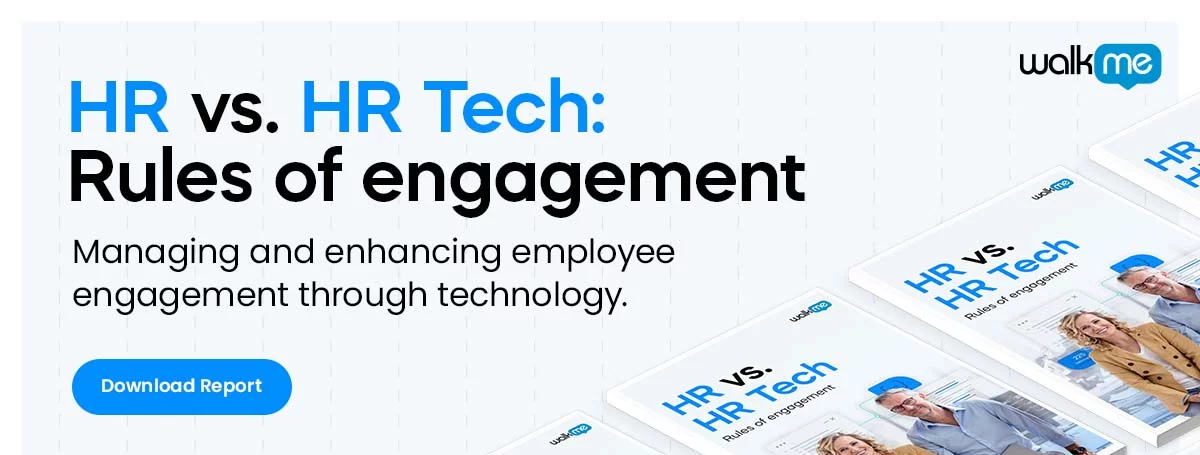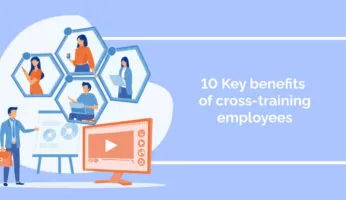
A digital employee offboarding experience is becoming more and more essential in today’s digital workplace.
The right offboarding workflow can not only leave a positive impression on departing workers, it can give employers valuable data about why employees are leaving. That information, in turn, can be used to further improve the business over time.
As we’ll see below, however, it is important to develop an offboarding experience that fits in with today’s digital-first work environment.
Employee Onboarding vs. Employee Offboarding
Most of us are familiar with employee onboarding, the first steps an employee takes with an organization after they’re first hired.
The onboarding process, among other things, is designed to:
- Ease employees’ integration into their teams and departments
- Shorten time-to-competency through measures such as employee training
- Maximize the chances that the employee will stay with the company over the long haul
HR professionals widely recognize that steps such as these can improve employee productivity, increase retention, enhance organizational communication, and, ultimately, have a positive impact on the organization.
Yet fewer companies pay attention to the offboarding process – that is, the structured process employees undergo when leaving the organization.
On the surface, this makes sense.
After all, employees are on the way out the door, so why do we need an “offboarding” process at all?
There are several reasons:
- Leaving employees with a positive impression at the end of their journey can improve employer branding and, when the situation warrants, leave the door open for the employee to return
- An offboarding experience offers, if called for, employers the ability to part with employees amicably
- Exit surveys can offer insight into business problems that may have caused employees to leave
- Offboarding ensures that there are no loose ends, which can include everything from forgotten equipment to signing paperwork to training new hires
The right offboarding process, in short, can be an experience that benefits both employees and employers. Yet to make the most of that experience, it is important to take a structured approach to offboarding.
Key Elements in the Offboarding Process
We have already alluded to several key ingredients in the offboarding process.
Among the most important are:
- Exit surveys. Exit surveys should be targeted and, among other things, should be designed to learn why an employee left. This information, as mentioned, can be used to improve employee engagement and minimize problems that could cause more employees to leave. To actually achieve that objective, it is important to deliver employees’ comments and feedback to appropriate parties, such as managers and business leaders. Also, this data should be continually incorporated into the business to actually ensure that it actually generates tangible value.
- “Housekeeping” tasks such as documentation, closing IT accounts, and returning equipment. Another “housekeeping” task that should be accomplished is paperwork. Employees will need to sign relevant paperwork, such as benefits packages, retirement packages, severance packages, and so forth. It is also important to tie up other loose ends, such as removing software access, ensuring that employees have returned IT equipment, and updating relevant records across the organization.
- Handing off work to other team members. In the event that employees are leaving with advanced notice, it is important that those workers hand off their work to their successors. In some cases, these will be existing team members, and in others, new hires. Either way, ensuring this smooth transition is vital to onboarding new employees and maintaining peak productivity levels during the change.
When designing these processes, one of the most important points to keep in mind is the fact that today’s workplace is primarily digital – today’s workforce, after all, spends the vast majority of their time working with software. It is therefore important to make the offboarding process as digital as possible.
Some feel that the emphasis on digital will die down after the COVID-19 pandemic and the decrease in remote working. That may be true, but the digital employee experience will remain central to the modern work environment even after offices return to full operation.
For that reason, it is important to leverage modern tools to create an offboarding experience that can be delivered either remotely or in-person.
Creating a Digital Employee Offboarding Experience
The digital offboarding experience should cover all of the same goals mentioned above – exit surveys, completing paperwork, and handing off work to successors.
Here are a few tips to ensure that this process proceeds smoothly:
- Online survey software can make it easy to conduct employee exit surveys
- Paperwork can be completed using digital signature software, as long as that software is compliant and has been approved by the organization
- Departing employees can use teleconferencing tools to train their successors
- Digital workflows can be recorded and standardized using digital adoption software such as WalkMe’s DAP, which can offer a permanent record of those workflows
This last point demonstrates one of the biggest benefits of modern digital tools over traditional offboarding and training methods. Namely, departing employees can use tools such as DAPs to create walkthroughs and workflows that can be replayed an infinite number of times. Those workflows then become long-term assets that can be used during onboarding and training, long after the employee has left.
WalkMe Team
WalkMe spearheaded the Digital Adoption Platform (DAP) for associations to use the maximum capacity of their advanced resources. Utilizing man-made consciousness, AI, and context-oriented direction, WalkMe adds a powerful UI layer to raise the computerized proficiency, everything being equal.



